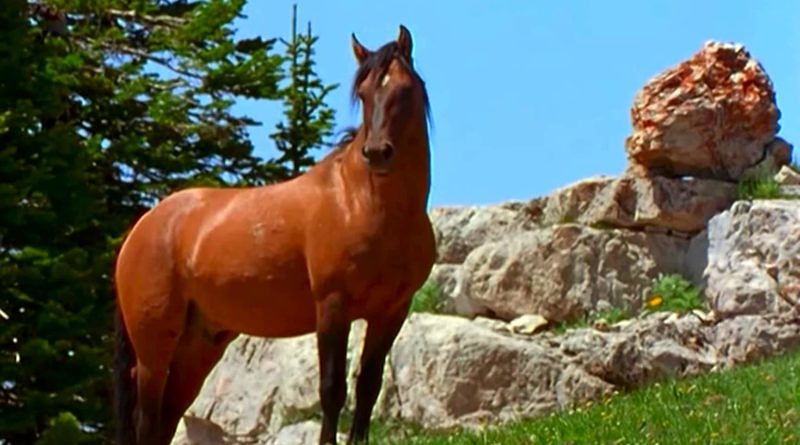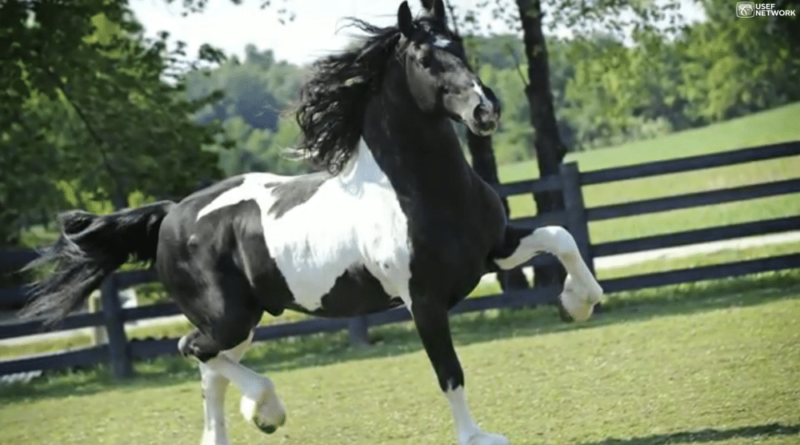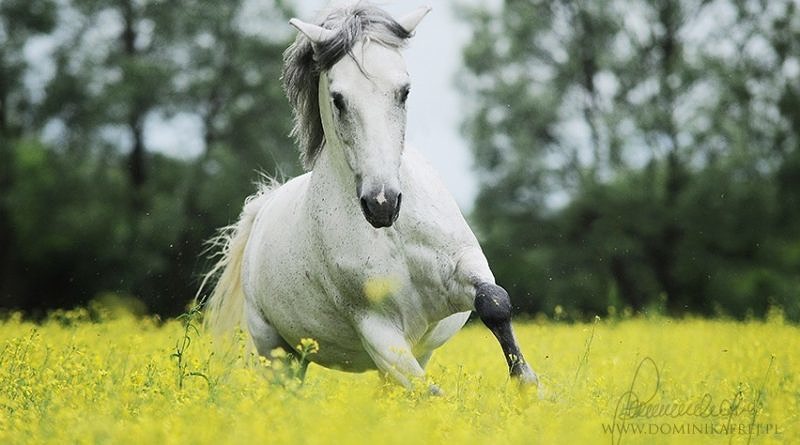When and why do stallions kill foals?
Though disturbing to us, infanticide is fairly commonplace across many species. When and why does this shocking behaviour occur in horses? And does it serve a purpose?
This disturbing footage of a feral stallion (starting at 0:42) attacking and killing a newborn foal lingers in the minds of all who have seen it. The documentary this clip is from (Cloud: Wild Stallion of the Rockies (1995)) is not scientifically rigorous in its interpretations, but it does document many interesting feral horse behaviours – and this instance of infanticide is one of the most shocking.
In this particular example the foal would likely have died anyway. However this behaviour has been observed in other contexts, including with perfectly healthy foals. For a lot of people, the idea that a horse would violently kill a young and helpless foal might be difficult to swallow. But when and why might this happen?
Though it may seem strange to us, infanticide by males is actually fairly commonplace among different animal species. Similar behaviours have also been observed in zebras, which are of course closely related to horses.
Other well-documented examples include lions and langur monkeys. Similar behaviours are found in mice, prairie dogs, sea lions, meerkats, lemurs, bears, bats, martens, marmots, squirrels, hares… The list goes on.
Why does this happen?
The first thing to appreciate is that this behaviour is not simply some strange quirk, or something carried out by particularly abnormal or crazed males. It is much too common across species to be explained away as an oddity – it seems to actually have some function. The best way to understand phenomena such as this is to look at the evolutionary consequences of the behaviour and why it might be advantageous. So can we use this to explain why stallions attack foals?
We know that reproduction is very important for evolution: if a horse does not reproduce, he or she will not pass on the genes that made them who they are. (For a quick refresher on evolutionary theory, check out our Introduction to Evolution.) Remember that genes are not only involved in deciding what we look like, but our personalities and how we behave as well! Of course other things also play a part in determining how we end up, but to some extent, offspring inherit aspects of all these things from their parents.
If a stallion manages to breed, it is because he possesses a set of genes that give him advantages over other stallions when it comes to breeding. And a stallion who successfully produces offspring will pass on genes that help the next generation do the same. Over many generations, this means the genes present in the horse population favour stallions that produce lots of offspring that go on to produce their own offspring and so on.
However a stallion can never be certain that he is the father of a given foal. Unlike the mother, who carries and gives birth to her offspring, for the father things aren’t as clear-cut! This matters because males that provide some degree of parental care to their offspring do so at cost to themselves. For example, a stallion has to spend time guarding his mares from other males or potential threats. And this is time he could be spending mating or doing things that will keep him strong and healthy (like eating) so he remains the herd stallion and can produce more offspring. Since he stays close to his mares and offspring, he also is in direct competition with them for food – and they with each other. And as colts grow up, they become direct competition for mates as well.
All this means that it is very important for a stallion to be sure that any offspring he raises are actually related to him. And this is especially true for unrelated male foals: one day they will become his competitors. Whereas unrelated female foals will mature in just a few months and have the potential to become a productive part of his harem of mares.
A stallion who accidentally cares for a different stallion’s offspring will not raise his own as successfully, so the genes that made him so generous will die with him. Caring for his rivals’ sons simply means he is spending time and energy protecting colts that do not carry his genes.
As a result, stallions have evolved strategies to safeguard against raising other stallions’ offspring. And one of these instincts is to kill young foals – especially males – that are probably not their own, if the opportunity arises.
How do stallions know which foals are their own?
The truth is that stallions probably can’t tell if a foal is theirs. For example there isn’t much evidence that stallions can smell whether a foal is their own and there’s no reason to believe they can recognise them by sight.
So how can stallions avoid raising foals that they haven’t fathered? Instead of being able to recognise their own foals, stallions just need to have a general rule or ‘heuristic’ that helps them identify foals that are highly likely not to belong to them.
An example of such a rule would be to kill foals when taking over a band of mares from another stallion. Though mares do sometimes sneak outside the harem to mate with other stallions, on average the foals in a rival’s band will not be sired by the new stallion. So if the new stallion kills them all, he might be killing a few of his own offspring as well, but he will primarily be getting rid of a rival’s children. He will then be able to focus his energy on producing and protecting the next generation of foals, most of which will be his own.
In the clip from Cloud, the stallion who attacked and killed the foal was a rival stallion from a different herd. He could be fairly confident that the foal was not his own and sadly that was enough for him to decide to kill it. This may seem harsh and haphazard but simple rules like this can be found throughout nature. From an evolutionary perspective, even quite a poor rule can be better than nothing at all.
How often does this happen?
Whether this behaviour is in fact commonplace among ‘wild’ horse populations is controversial. Some studies suggest that it is under-reported and plays an important role in equid social structure, while others argue that it is a rare occurrence under very specific circumstances.
Since horses tend to live in managed herds, there are very few populations that live a truly wild existence and it is hard to know what these horses would do if left to their own devices. What the evidence seems to suggest is that there is a risk to introducing mature stallions to new mares with foals at foot – and this is especially true if the foals are male. Young stallions are less likely to show aggression towards foals they don’t know and fillies are less at risk in general.
“If you can’t handle me at my worst…”
Many horse lovers might not be happy to learn that horses can engage in such a violent behaviour. But we have to remember that horses, like humans and all other animals, are a product of evolution. The evolutionary process is blind – all that matters is how successful an animal has been at reproducing. Nature produces a lot of pain and ugliness as well as spectacular beauty.
If you are only casually interested in horses then perhaps you can get away with ignoring the ugly stuff. But those of us who want to work with horses as partners and friends need to be clear-eyed, open-minded and willing to take the bad with the good. If we want to truly understand our equine companions we first need to recognise and respect them as the living, breathing, spooky, smelly, funny, occasionally violent, frequently flatulent, engaging and beautiful animals that they are.







